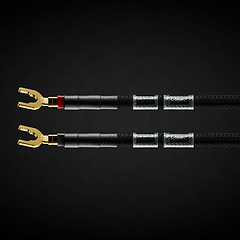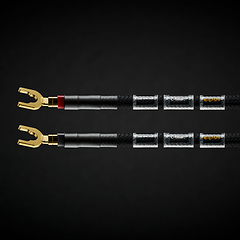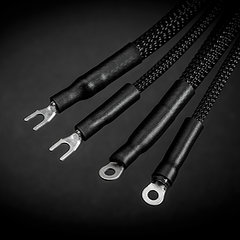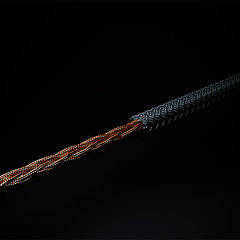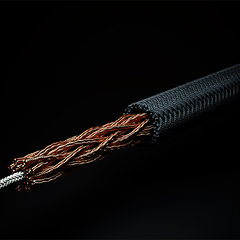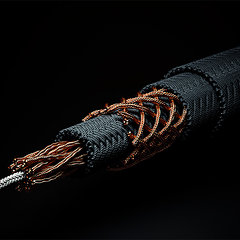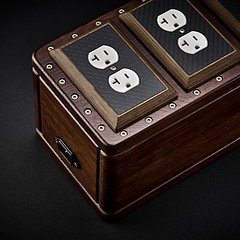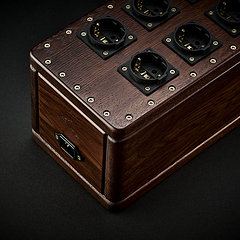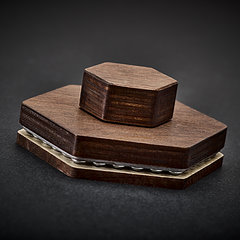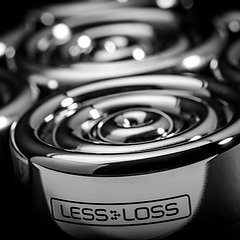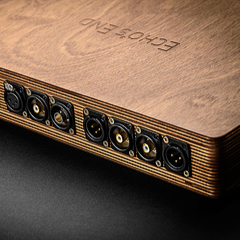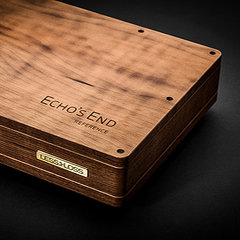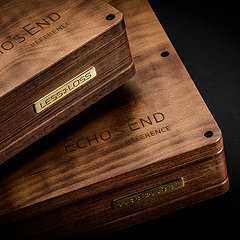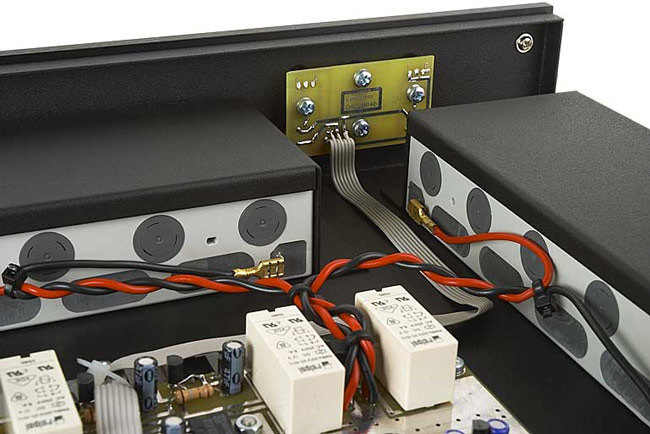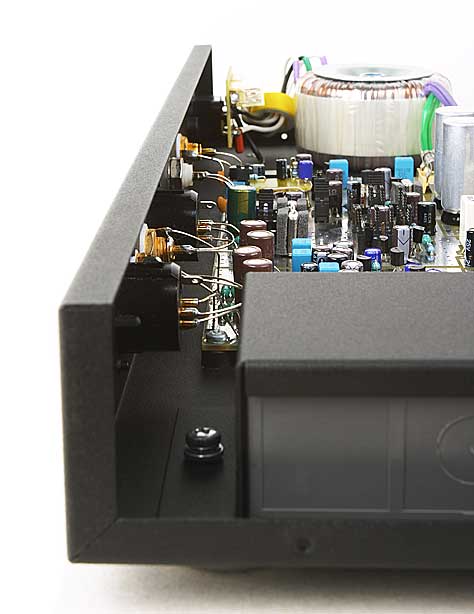Hybrid PowerA very important issue relating to the quality of a DAC is its power supply. Even a household washing machine has a power supply filter of some sort. Most DAC or CD player manufacturers incorporate a similar or slightly better approach to power supply filtering. Then there are the few who go to the extreme in the "capacitance race". The results are costly, but are they the best possible? LessLoss, in our goal of achieving the best possible solution, has experimented extensively with the most radical power supply filtering methods. The result of this is a realization of the fact that a real-time power supply filter can never approach the quality attained by the filtering of power using the chemical means of rechargeable batteries, except in the digital realm.
Battery Power SupplyIt is widely known that wide spectrum frequency interference causes intermodulation distortion in any audio amplification system. Purifying the power voltage from this wide frequency spectrum 'trash' is the goal of the power supply filter. However, in doing so, it also must not bottleneck the current flow to the amplification circuit. Excessive use of capacitance is the traditional solution to this problem. Other extreme solutions include running multiple transformers in series. These are highly costly and impractical solutions. Even when using battery power, some electromagnetic induction of high frequency interference occurs. However, as the amount is small, it is effectively filtered via the use of a small value capacitor. Advantages of Battery Power
Relay CircuitThe LessLoss DAC 2004 uses a multiple relay circuit to charge the batteries from the city mains while the device is not in use. When the user presses the Play button, the relays switch the mains power to the charging schematic off. The relays totally galvanically isolate the audio schematic, including the ground. This frees the DAC 2004 audio schematic from any and all influence resulting from mains interference. This could include your microwave oven, your CD player, or even your local radio station. The digital section, on the other hand, actually benefits from wisely filtered mains power. In earlier designs, we did incorporate a separate battery for the digital section, but as our newly developed mains filtering solution clearly outperforms any battery solution for digital schematics, we have since abandoned the use of battery power for the digital section. Thus, the DAC 2004 presently employs a hybrid power supply based on a highly filtered mains power supply for the digital section and a balanced battery power supply for the analogue section.
Low Frequency Performance on Batteries?It is often feared that low frequency performance is hampered by the use of battery power. This is probably due to widespread faulty circuit topology, but certainly not due to the batteries themselves. The DAC 2004 includes two separate batteries. They provide balanced power to the analogue schematics. These are the requirements for the best starting conditions for the cleanest operation of the audio signal schematics. 25x the Theoretically Necessary CurrentThe fully Class A battery power supply is constantly supported by 25 times the theoretically necessary current. This results in an operational time between battery charges of approximately 10 hours. When the batteries are low, the onboard automatic battery charger circuit automatically applies a trickle charge to the batteries. You can listen to music non-stop with no interruption to playback. When you want, you can press the Charge button and have the unit mute playback and charge the batteries overnight when you are no longer listening. By pressing the Play button, the user may choose at any time to prematurely interrupt the charging process and commence playing before the batteries are fully charged. An adequate trickle charge remains, ensuring that the unit never cuts off the music. Best Possible Performance Over TimeThe charger begins charging the batteries before they run down. This prolongs their life and guarantees the same level of performance from them throughout their lifetime. Indeed, many users completely forget that this is a (partly) battery-powered unit! |
- Products
- Power Cables
-
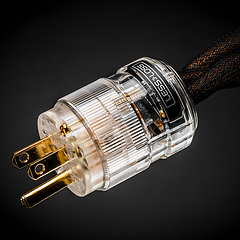 C-MARC™ Prime
The must have foundation for any sound system today.
From
$
486
C-MARC™ Prime
The must have foundation for any sound system today.
From
$
486
-
 C-MARC™ Classic
The unique super-cable power cord everyone's talking about.
From
$
1148
C-MARC™ Classic
The unique super-cable power cord everyone's talking about.
From
$
1148
-
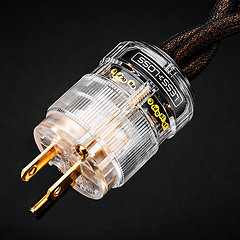 C-MARC™ Classic Entropic Process
The peerless, advanced Classic masterpiece.
From
$
1934
C-MARC™ Classic Entropic Process
The peerless, advanced Classic masterpiece.
From
$
1934
-
 C-MARC™ Stellar Entropic Process
The crown jewel for highest performance power connection.
From
$
2450
C-MARC™ Stellar Entropic Process
The crown jewel for highest performance power connection.
From
$
2450
-
- Loudspeaker Cables
- Interconnect Cables
-
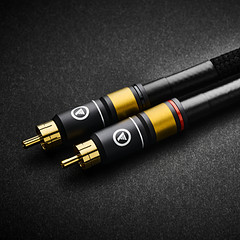 RCA C-MARC™
Cotton-clad true Litz • Whopping 2.3mm2 polarities
From
$
850
RCA C-MARC™
Cotton-clad true Litz • Whopping 2.3mm2 polarities
From
$
850
-
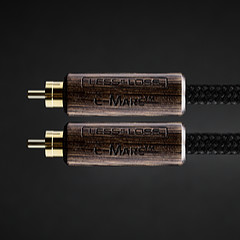 RCA C-MARC™ Entropic Process
Our finest RCA cable • Polished Wenge barrels
From
$
1428
RCA C-MARC™ Entropic Process
Our finest RCA cable • Polished Wenge barrels
From
$
1428
-
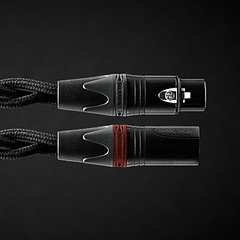 XLR C-MARC™
A hand-braided cotton-clad unique Litz construction
From
$
950
XLR C-MARC™
A hand-braided cotton-clad unique Litz construction
From
$
950
-
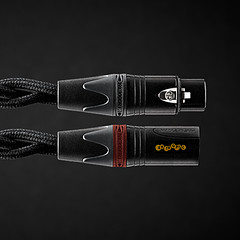 XLR C-MARC™ Entropic Process
Stratospheric performance for the audio connoisseur
From
$
1615
XLR C-MARC™ Entropic Process
Stratospheric performance for the audio connoisseur
From
$
1615
-
- Digital Cables
-
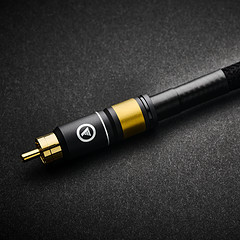 RCA Digital C-MARC™
Cotton-clad unique Litz design • Made only by LessLoss
From
$
510
RCA Digital C-MARC™
Cotton-clad unique Litz design • Made only by LessLoss
From
$
510
-
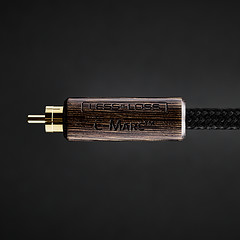 RCA Digital C-MARC™ Entropic Process
Possibly the most subtle digital cable on the planet
From
$
858
RCA Digital C-MARC™ Entropic Process
Possibly the most subtle digital cable on the planet
From
$
858
-
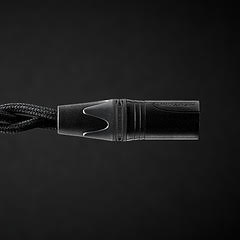 XLR Digital C-MARC™
Featuring a whopping 3 x 2.3mm2 Litz construction
From
$
570
XLR Digital C-MARC™
Featuring a whopping 3 x 2.3mm2 Litz construction
From
$
570
-
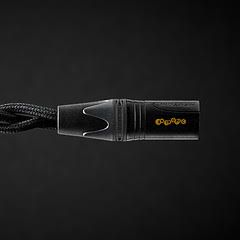 XLR Digital C-MARC™ Entropic Process
Stratospheric performance for the audio connoisseur
From
$
969
XLR Digital C-MARC™ Entropic Process
Stratospheric performance for the audio connoisseur
From
$
969
-
- Grounding Cables
- Bulk Wire and Cable
- Signal Conditioners
-
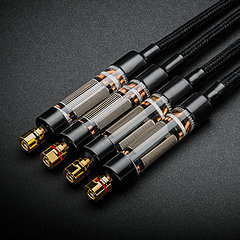 Firewall for Loudspeakers
Firewall for Loudspeakers
C-MARC™ Plug-and-Play Speaker signal conditioning like you've never imagined From $ 1656 -
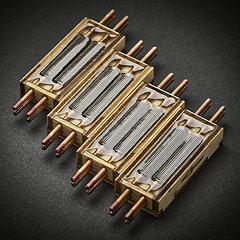 Firewall for Loudspeakers
Firewall for Loudspeakers
DIY version for Self-Installation For the Do-It-Yourself project enthusiast • Solder yourself From $ 800 -
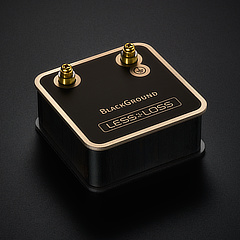 BlackGround DIY
Voltage-ground interface for a variety of applications
From
$
446
BlackGround DIY
Voltage-ground interface for a variety of applications
From
$
446
-
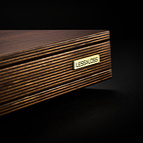 BlackGround 8x/10x Speaker Base
Plug-and-play loudspeaker signal conditioner
From
$
3096
BlackGround 8x/10x Speaker Base
Plug-and-play loudspeaker signal conditioner
From
$
3096
-
- Power Conditioners
-
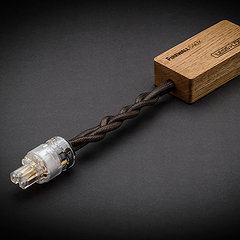 Firewall 640x
Plug-and-play solution for any powered gear
Firewall 640x
Plug-and-play solution for any powered gear
C-MARC™ Entropic Process and standard lead versions From $ 654 -
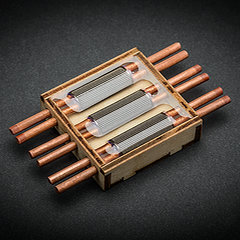 Firewall 640x DIY for Self-Installation
Self-solder and save!
From
$
320
Firewall 640x DIY for Self-Installation
Self-solder and save!
From
$
320
-
 BlackGround DIY
Voltage-ground interface for a variety of applications
From
$
446
BlackGround DIY
Voltage-ground interface for a variety of applications
From
$
446
-
 BlackGround 6x/10x Power Base
Plug-and-play power conditioner
From
$
2350
BlackGround 6x/10x Power Base
Plug-and-play power conditioner
From
$
2350
-
- Power Distributors
- Equipment Feet
- Field Conditioner
- DACs
- Power Cables
- Reviews
- This is definitely the cable to go for. It will almost literally blow your mind. – March 2012, Puresound Magazine
-
I was intrigued by the unanimously positive reviews garnered by these products ...
– by user Raymond Eye
Leaves you speechless
Sensational cables
BEST purchase I've made
Top notch performance
It's a steal
Musical... liquid... 3D
It's not subtle
More than an upgrade
Best I've heard so far
Stellar service
Sounds like a new system
Much more lifelike
Emotional flow
Overwhelming results
More dimensional
Sound is transformative
We were all astounded
Transformed my listening
Sounds so cohesive
Emotionally engaging
- Where to Start
- Free Newsletter
- Newsletter Archive
- B-Stock Alerts
- Shopping Tools
-
Shipping
- Free Shipping Learn about our international shipping policy
-
Return Options
Our satisfaction guarantee
and return policy -
Customs
UPS expedites local
customs clearance
-
Transaction
- Conditions of Sale Agreement for a smooth business transaction
- Privacy Policy We pledge to keep your information private
-
Terms of Use
Business policies
and agreements
-
Account
-
- Contact Us
-
Meet the Designers
-
- Care to share of your personal experience with our products? We'd be happy to post it!
- Want to learn more about our activities? Our Newsletter is both free and spam-free.
hi-res photos, brochures
logos, press releases, and
print-friendly PDF downloads. -
Contact Us
Connect with Us
-
